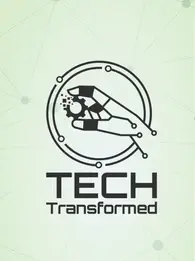
As each day passes, greater numbers of organizations are adopting artificial intelligence. They’re incorporating it into their products and services, building new solutions and reinventing existing ones, and they’re using it to run better operations.
Soon, AI in an enterprise will be as ubiquitous and as important as connectivity and electricity.
Being successful with AI, like a lot of major industrial-scale innovation over the years, will require thoughtful and strategic moves. It will demand some tough decisions such as dropping or reinventing some products and services, taking on new revenue opportunities, and reshaping the workforce. The AI-supported enterprise will require retooling employees and perhaps even reducing staff.
Let’s take a look at a few of the early actions that businesses may want to identify as a plan for an AI future.
1. Create a Vision and Strategy
As a priority at the leadership and management level, it’s important to have a vision for AI in the organization. It should be clear on what problems AI will solve or new opportunities that it will present. That vision will be translated to a strategy. A strengths, weaknesses, opportunities, and threats or SWOT analysis will add value here. The risks of doing both nothing and something must also both be evaluated.
Developing a vision and strategy and conducting both a SWOT analysis and risk assessment will require acquiring knowledge on what’s currently possible and even some predictions and bets on where AI is headed. Leaders should attain a good understanding of AI providers, the solutions they are shipping, and their future product and service roadmaps. They should also closely monitor their competitors and deeply engage their own customers on expectations.
2. Invest and Experiment
Management must also be prepared to take some additional investment risks and be open to experimenting. Fostering a culture of innovation is essential. Research results published in the Harvard Business Review claim that early adopters of innovation using digital technologies are growing twice as fast as those who are technologically conservative.
For many organizations, short-term plans for AI are going to be primarily focused on acquiring or upgrading existing tools with integrated AI. Applications that are delivered via software-as-a-service or SaaS will simply see the capability as it is made available.
In the medium term, companies will acquire new, AI-centric tools for all manner of augmentation and automation capability including forecasting, design, customer service, content generation, and more. This will be a time for developing an organization’s AI standards and principles.
In the long-term, AI will necessitate many organizations to completely reinvent themselves in order to survive.
3. Develop a Training Plan
Leadership and staff training in a rapidly changing world of digital transformation is more important than ever. With AI, training must be a high priority. Knowing how to tap into these new AI functions and leverage their value will enhance employee performance.
4. Consider Buy Versus Build
For a growing number of businesses, there will be enthusiasm to build their own AI-powered solutions. It’s a more complex and riskier route, but with plenty of upside including attaining competitive advantage. In the short-term, a focus on acquiring existing solutions is likely the less risker route.
5. Review Hiring Strategy
Depending on an organization’s complexity and degree of engagement with AI systems, it will need to consider retooling and hiring talent. Roles will include those with AI skills and experience such as project managers, analysts, programmers in a variety of languages, architects, data scientists, and perhaps even in prompt engineering — the ability to construct high quality GPT inputs.
In Conclusion
Preparing your organization for the challenges and opportunities of the 21st century means being in a forward-leaning position. It will require bolder choices, greater risks, uncertain investments, and a culture of innovation. And the bottom line? It’ll be all for nothing, if you don’t have the right skills available.
Dr. Jonathan Reichental is an award-winning technologist and educator. This post is adapted from his upcoming online video course in Artificial Intelligence called, Introduction to Generative AI with GPT. You can check out many of Dr. Reichental’s popular videos here: reichental.com/lil.
Please also consider signing up for his newsletter, Postcard from the Future HERE.












